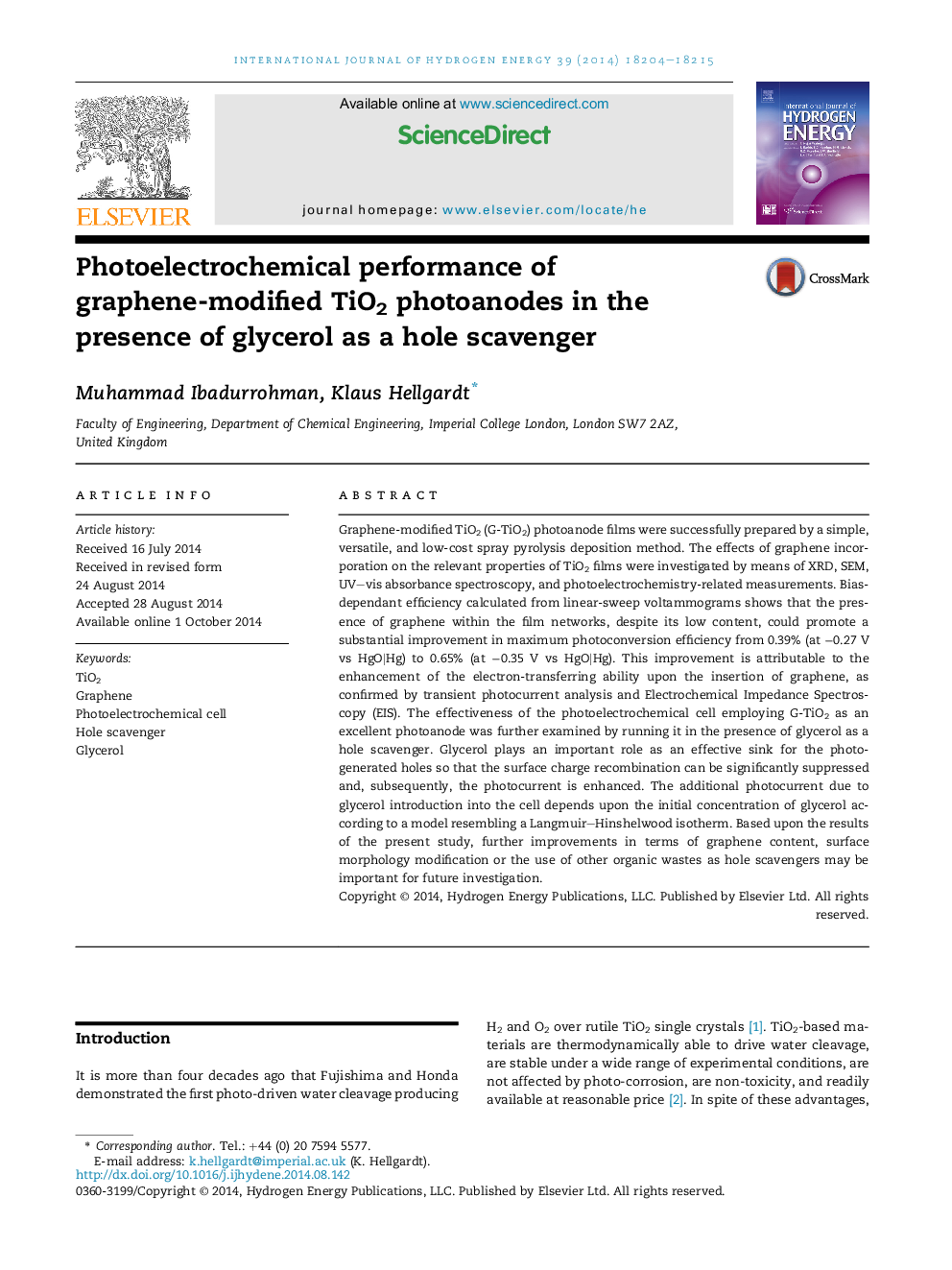| کد مقاله | کد نشریه | سال انتشار | مقاله انگلیسی | نسخه تمام متن |
|---|---|---|---|---|
| 1280830 | 1497477 | 2014 | 12 صفحه PDF | دانلود رایگان |

• Graphene-modified TiO2 films were prepared via a facile spray pyrolysis method.
• Photoelectrochemical (PEC) properties were studied upon white light irradiation.
• Graphene insertion onto TiO2 films, albeit in low content, enhances the PEC efficiency.
• Glycerol is an effective and economical sacrificial agent to improve PEC responses.
• The effects of glycerol content on PEC responses resemble an L-H adsorption model.
Graphene-modified TiO2 (G-TiO2) photoanode films were successfully prepared by a simple, versatile, and low-cost spray pyrolysis deposition method. The effects of graphene incorporation on the relevant properties of TiO2 films were investigated by means of XRD, SEM, UV–vis absorbance spectroscopy, and photoelectrochemistry-related measurements. Bias-dependant efficiency calculated from linear-sweep voltammograms shows that the presence of graphene within the film networks, despite its low content, could promote a substantial improvement in maximum photoconversion efficiency from 0.39% (at −0.27 V vs HgO|Hg) to 0.65% (at −0.35 V vs HgO|Hg). This improvement is attributable to the enhancement of the electron-transferring ability upon the insertion of graphene, as confirmed by transient photocurrent analysis and Electrochemical Impedance Spectroscopy (EIS). The effectiveness of the photoelectrochemical cell employing G-TiO2 as an excellent photoanode was further examined by running it in the presence of glycerol as a hole scavenger. Glycerol plays an important role as an effective sink for the photogenerated holes so that the surface charge recombination can be significantly suppressed and, subsequently, the photocurrent is enhanced. The additional photocurrent due to glycerol introduction into the cell depends upon the initial concentration of glycerol according to a model resembling a Langmuir–Hinshelwood isotherm. Based upon the results of the present study, further improvements in terms of graphene content, surface morphology modification or the use of other organic wastes as hole scavengers may be important for future investigation.
Figure optionsDownload as PowerPoint slide
Journal: International Journal of Hydrogen Energy - Volume 39, Issue 32, 31 October 2014, Pages 18204–18215